


Reviews
Going and coming without error
The best (and worst) RoIO artwork
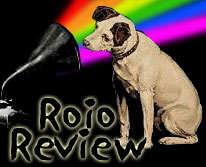
I have always been fascinated with artwork found on album covers or within CD booklets. I would find myself spending a lot of time looking through the artful booklets while listening to the songs. Then in the summer of 1999, I fell into the world of RoIOs with a seemingly endless supply of artwork! Generally, I simply download RoIOs from other fellow traders, and rather than use artwork or booklets that other people have furnished, I prefer to create my own artwork and tray liners. But I still like viewing the artwork of others.
I also like checking out artwork that the 'professionals' designed for their overpriced bootlegs. I do want to point out that you should never buy any bootlegs. These professional bootleggers are only out to make money, which is why there are often mistakes in most of their printed materials. You can find many true fans who collect and trade these recordings for no profit at all. You can trade by mail or by the Web downloads. The sound quality is often better than what the professional bootleggers put out; true fans take the time to remaster and enhance the sound of the recordings. And the artwork and booklets are more accurate and informative than what the pro bootleggers put out. Please consider simply trading for the RoIOs instead of buying them.
A good RoIO packaging always includes an accurate track list, date and venue, credits, etc. There are some that come with multi-page booklets with loads of pictures and some with even the history of the band up to that particular performance! Many RoIOs distributed by traders always put disclaimers on the packaging to encourage trading rather than sale of the show. Many of these labels, like Harvested and Free Range Pigs, have really professional looking packages with their own cute logos as if they were the official releases!
It can be quite annoying to find packaging with incomplete or erroneous information. In my mind, a good collector should know all the details of the performance by using the above good packaging traits. There, however, are some packages that have errors and factual mistakes that can really change the concept of the concert recordings. Some are simply re-releases of previously bootlegs or are brief RoIO samplers. Below is a list of the five worst and the five best Floyd RoIOs, from a perspective of their printed packaging.
Five worst RoIO packages
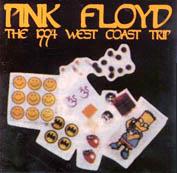 The 1994 West Coast Trip |
Title: The 1994 West Coast Trip
Actually: Joe Robbie Stadium in Miami, Florida on March 30, 1994
Disc says: Oakland California on May 20, 1994
Label: Insect Records (IST 39/40)
On the cover: LSD-blotters bearing an arrangement of unFloydy images.
The information on this professionally-bootlegged disc's and artwork said this recording took place in Oakland when it is actually a remastered version of The Live Bell, performed in Miami on the first show of the tour! East coast, west coast... what's the difference? This kind of factual mistake is misleading, and should make paying customers angry (a good argument against paying for bootlegs!).
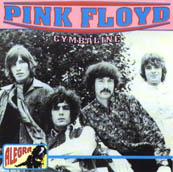 Cymbaline |
Title: Cymbaline
Dates: 1968-1971
Label: Alegra (CD 9014)
On the cover: Band shot of the 1967-era with "Pink Floyd" in pink at the top and the Alegra logo on the lower left.
The variety of performance dates on the seven tracks can be quite confusing, and the sources listed are apparently unreliable, according to many traders. On the Pink Floyd RoIO Database, one reviewer pointed out that this is yet another Italian release that includes random mix of tracks from the BBC Sessions and the 1971 San Diego concert. It serves as a sampler of other RoIOs available (and possibly sold by the same bootlegger). I would hate the idea of buying a bootleg only to find that it isn't complete and straightforward as far as performance dates.
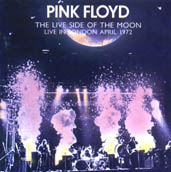 The Live Side of the Moon |
Title: The Live Side of the Moon
Dates: various 1972 dates
Label: Seagull Records (CD 013)
On the cover: Stage shot with "Pink Floyd" title.
This professionally-produced RoIO is sourced from an unclean vinyl copy of The Best of Tour 72, with inaccurate song indexing and times. There is nothing worse than buying a RoIO that is simply a rehash of something that can easily be traded for.
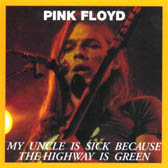 My Uncle is Sick Because the Highway is Green |
Title:My Uncle is Sick Because the Highway is Green
Actual dates: various
Disc says: Wolverhampton, UK on March 8, 1967
Label: Oil Well
On the cover: David Gilmour singing into a microphone.
This is pretty terrible, folks. This packaging claims this is a Wolverhampton 1967 concert performance, but it is actually a collection of 1968 BBC recordings along with a couple songs from the Ommayad RoIO. On the Pink Floyd RoIO Database, one contributor points out that that Oil Well label was infamous for cheap packaging and intentionally-incorrect information. He also believes that this package is a recycling of Ultra Rare Trax 1. I would steer clear of this misleading RoIO, even if you could get it for free!
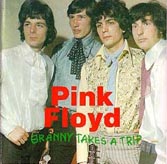 Granny Takes a Trip |
Title: Granny Takes a Trip
Dates: Various - January 11, 1967 through November 15, 1972
Label: Wonder Music (WMCD/117)
On the cover: 1967 group shot
The tracklisting on the rear cover is about as misleading as you can get: it says "All tracks are early studio demos featuring Syd Barrett". In fact, only the two versions of "Interstellar Overdrive" on this disc featured Syd. "Looking Through the Knotholes in Granny's Wooden Leg" is a live version of "Echoes", not a demo of any sort. The first version of "Interstellar Overdrive" supposedly contains "Zabriski (sic) Point", which is really nothing but a first verse of "Flaming". This is a kind of RoIO that would confuse paying customers, possibly angering some that were looking for Syd Barrett-era demos.
Five best RoIO packages
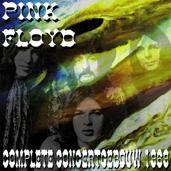 Complete Concertgebouw |
Title: Complete Concertgebouw
Date: Amsterdam, Netherlands on September 17, 1969
Label: Free Range Pigs (FRP CDR-007/008)
On the cover: A portrait of the band overlaid with a design of swirling colors.
This is a very nice artwork cover from a non-profit RoIO producer. Free Range Pigs doesn't sell its recordings; they distribute them for free on online trading networks. They even say so on the booklet, alongside accurate concert information.
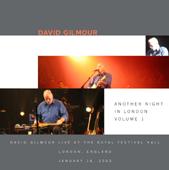 David Gilmour - Another Night in London, volume 1 |
Title: David Gilmour - Another Night in London, Volume 1
Date: Royal Festival Hall in London, England on January 16, 2002
Label: Free Range Pigs (FRP CDR-015/16)
On the cover: Three pictures from the concert, set amongst white and gray blocks of color.
This booklet contains many photographs of the concert performance with full track listing information. Again, this RoIO was again freely distributed and the quality of this packaging is excellent... better than most RoIOs one would have to pay for!
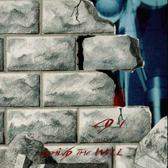 Behind the Wall |
Title: Behind the Wall
Date: Nassau Coliseum in Long Island, New York on February 28, 1980
and
Paramount Studios in Los Angeles, California on February 1, 1980 (The Wall Rehearsals)
Label: STBX 022/23/24
On the cover: Beautiful drawing and colored wall with The Wall-like handwritten title.
This is an excellent package, with picture discs and a 24-page color book with many pictures from The Wall live show. On the other hand, it comes with a few errors in the tracklist. This was done by a professional bootlegger, so I can understand why there would be tracklisting errors. Die-hard fans who offer their RoIOs by trade would at least get their information right.
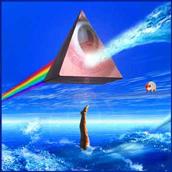 Steel Breeze |
Title: Steel Breeze
Date: Ivor Wynne Stadium in Hamilton, Ontario, Canada on June 28, 1975
Label: Harvested (HRV013)
On the cover: A fine cover with a rainbow shooting through the back of a floating pyramid with a white light out the front, and the Wish You Were Here diver in the water with raging ocean waves.
On the trayliner: A picture of sand swimmer, with tracklisting.
This is a very good packaging. Everything you need to know about this performance is found on the inside of the front cover and the trayliner. Sometimes, a few pages can be best with this kind of design! This RoIO is freely distributed, so the cover and trayliner was designed for easy printing. Good job, Harvested!
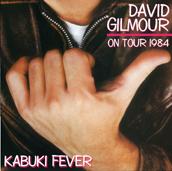 David Gilmour - Kabuki Fever |
Title: David Gilmour - Kabuki Fever
Date: Kabuki Theater in San Francisco, California on June 26, 1984
Label: Harvested (HRV025)
On the cover: Same image as the official About Face album, with added information about the performance.
On the trayliner: A picture of David Gilmour with Photoshopped kabuki makeup, with tracklisting.
This is the best packaging in my opinion, as the cover is a fold-out with the rear cover including all information that makes it a good one. The touring band members names are listed, the tracklist includes the filler material (the rare Jokers Wild recordings), even the members of Jokers Wild are listed with their instruments.
I can't help but notice that the best RoIO packaging is found on shows that are offered for free via trades and downloads. These true fans want to make their RoIOs as accurate as possible, with good artwork, and gladly share the recordings free of charge. I would steer clear from all professional bootlegs at all costs as they are a waste of money and often contain errors. Simply ask a fellow fan for a trade and enjoy good sound quality, excellent artwork, and accurate information. The traders will take care of you!
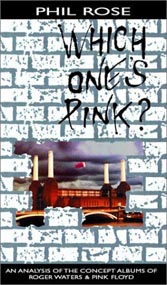 Which One's Pink: An Analysis of the Concept Albums of Roger Waters & Pink Floyd by Phil Rose |
Over the course of nearly 200 pages (including endnotes, a rather extensive bibliography, and a transcript of an interview with Roger Waters), Rose examines the recordings in painstaking detail, from the nuances of the lyrics and the contemporary interviews given in which Roger Waters discussed the songs' themes, to the actual structures of the chord progressions and guitar solos, the choice of instrumentation, and the multitude of sound effects. In doing so, he seems to have a singular goal in mind--to prove that his own fairly narrow interpretations of the albums' narratives are what Waters had in mind all along. Even as he quotes music historian Lawrence Kramer as saying, "Unlike a true account of something, an interpretation can never exclude rival, incompatible accounts. For any given interpretation, an alternative always exists," Rose does not seem interested in presenting any of these alternative interpretations. Instead, he just plows ahead with his own. The net result does not inspire the reader to explore the albums in search of other possibilities, but instead makes Waters' lyrics seem pedantic and confined in their scope. Rather than seeming universal in their appeal, Rose makes Pink Floyd's records seem disturbingly narrow.
I realize that I'm on shaky ground here. I have, after all, written a number of lyrical interpretations of Floyd songs and albums, and have been known to read far too much into very subtle turns of phrase which were, in all likelihood, a stretch to begin with. But I have always sought to clearly point out what is my own opinion, and never to put forth my own interpretation as 'definitive'. On the contrary, I have always hoped that my own interpretations would stimulate other fans to examine the music more carefully and come up with new insights of their own.
I scribbled a great many notes in the margins of Which One's Pink?, even as I found it increasingly difficult to finish. Some of these point out errors, others highlight interesting points he has made, and still others point out many places where I think Rose has gone right off the deep end. For instance, in discussing the second verse of "Breathe", Rose says that Wright's organ playing is "gospel-like", and that this conceptually supports the "preaching manner" of the lyrics, which he describes as being spoken by a mother to her young child. I'll buy the maternal voice, though to read any 'preaching' into Wright's use of a Hammond organ here would require you to interpret other uses of the Hammond elsewhere in the Floyd's recordings in the same way, wouldn't it? Another example: he claims that Clare Torry's wordless vocal on "The Great Gig in the Sky" represents "the horror that [the character] truly experiences when she conceptualises her non-existence." Wow. I wonder if even Clare knew that's what she was doing.

Rose's interpretations are strongest when he sticks to pure lyrical interpretation, but some of his most compelling (and, at the same time, most vexing) arguments stem from his insistence upon dragging features of musical structure and production techniques into the interpretation. This is shaky ground: we cannot assume that when Gilmour switched from one guitar effect to another during his solo in "Money" he was trying to drive home a specific point about how "our hero has fallen victim to the market forces and lost his position of power." Or that the jazz influences in Dick Parry's "Shine On You Crazy Diamond" represent a loss of innocence. Or that the use of melodic tritones and chromatic scales conveys "the harsh truth about Barrett's story". (At one point, he even pins a bit of thematic meaning to the subtleties of the stereo mix.)
At times he makes fascinating inferences and conjectures, finding meaning where Waters clearly did not intend any. For instance, he connects the end of "Dogs" with Allen Ginsburg's 1956 poem "Howl" (get it? "Dogs"/"Howl"), though in Rose's own 1995 interview, Waters admits that he had never considered such a connection until the moment that Rose mentioned it. And if a D minor 9 chord implies isolation and solitude in "Dogs", doesn't it follow that the same chord must imply the same things every time it is used elsewhere, including non-Floyd songs? How can one chord imply anything all by itself?
Too often Rose's interpretations are tied to his own thematic agenda. His description of how the musical complexity and use of synthesizers in "Shine On You Crazy Diamond" sonically depict the loss of innocence and corruption by the world of rock and roll is compelling. But his premise that Animals is the story of a young "dog" who yearns to become a member of the ruling class of "pigs" is too linear and confining. Rose claims that upon realizing that the "pigs" are keeping "dogs" like him down, his protagonist "dog" decides to lead the hapless "sheep" in an ill-fated revolution (and then, in the end, it turns out that it was--I'm not making this up--"merely a dream"). I'll wager good money that none of the Floyds--least of all Roger Waters--ever had such a story in mind.
The largest part of the book is devoted to The Wall, which he examines specifically from the point of view of the Object Relations Theory of psycholanalysis. Though Rose attempts to explain the theory in detail, he utterly fails to make it accessible to the average reader. I can't help but get the sense that this entire book started out as a term paper for some sort of graduate-level psychology class. (Just look at how many books on psychology are referenced in the bibliography--Rose clearly has done a lot of research on the topic.) He misses a great opportunity, too; if he had really taken the time to explain Object Relations in a way that most Floyd fans could really grasp, he just might have revolutionized the way we view Waters' masterpiece. Rose takes great pains to show the various personality disorders Pink adopts as defense mechanisms, but without good explanations and examples of these disorders, the analysis absolutely falls flat.
What's more, Rose relies far too heavily upon the Wall film for the bulk of his interpretation, mostly ignoring the visual aspects of the concert performances, and at times even relegating discussions of the Wall album itself to the footnotes. Unfortunately, Waters was not intimately involved in the shooting and editing of the film, and as a result it owes nearly as much to the vision of director Alan Parker as it does to Waters (or even Bob Ezrin, who made significant contributions to the album's final form). Since Waters has expressed a lot of reservations about the film (and that's putting it nicely; at one point he simply called it "a bad film"), basing a conceptual analysis of The Wall upon the film seems misguided and dangerous.
In short, Which One's Pink? is a tough read at best, and a misleading and exasperating one at times. Part of me wishes Rose had included analyses of Waters' highly-conceptual post-Floyd solo works, but other parts of me might have revolted if they had been forced to sit still to read any more.
The Camera Eye
All you touch and all you see
Omnipresent, November 3-5, 1987
Most bootleg video collectors will continually search for upgrades of their favorite shows. This means that quite often we trade three, four, or five times for the same title in search of that elusive mint copy. When we all traded on VHS this was more often the point; trade, trade, and trade again to find the best quality tape. And when we did, we would turn around and make copies to send back out in trade--once again entering the cycle of deteriorating video quality. Thankfully with the transition from VHS to DVD we no longer have to suffer degrading quality with every trade we make. But quality is still a challenge to the DVD collector, as quite often numerous versions of the same show surface, all from varying quality. When an upgrade comes out, it is best to retire your lesser quality copy and only circulate the best version available.
 David Gilmour, from Omnipresent. |
In 1987 the reformed Pink Floyd toured the world for the first time since the 1981 Wall performances. Quite a few VoIOs from this tour are in the collectors' circles, but considering the technology of the time, many of these are not of the highest quality. Even more rare is the professionally-recorded, broadcast-quality concert. During their November 3-5, 1987 stint at now imploded Omni in Atlanta, Georgia, the MTV crews were there to record a concert special for the television broadcast. Although the concerts were filmed and edited, it was later decided that the performances were not up to the band's high standards, so the concert video project was shelved.
Of course, for every safe there is a key, and virtually nothing can be kept locked for forever. Eventually, bootleg copies of the Atlanta Omni shows were leaked out to the collectors' circles. The first version of this show appeared as an untitled, stripped-down DVD simply called Atlanta Omni '87 and at best appeared to be a third- or fourth-generation VHS that was quickly converted to DVD with little thought to overall presentation. While this was acceptable in the early days of DVD bootlegs, there was always hope that an upgrade would surface. The people at Harvested DVD did manage to get a significant video upgrade, this was properly authored to DVD, including a nice selection of bonus features, namely the backdrop films used in the tour. The package was released under the name The Calhoun Tapes (HRV DVD 002). Fans praised the great production and The Calhoun Tapes quickly buried any existing versions of the Omni shows.
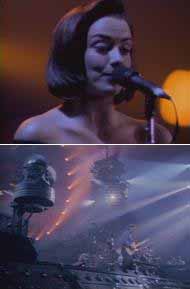 From Omnipresent: Rachel Fury (top), and a stage shot. |
eBay has become a boom (or bust) for bootleg video opportunities. It is here that the backstory of Omnipresent begins. While searching for video boots, an avid video fan came across an eBay auction for a couple Pink Floyd BetacamSP tapes. Betacam is the TV broadcast standard, the quality greatly exceeds the consumer formats that most bootleg videos are stored and traded on. Evidently the fan didn't know what to expect as one of the tapes in the auction had no identification but the fan went ahead and bid and eventually won the auction. When the tapes arrived the bidder did not have a Betacam playback deck, so the tapes were put into temporary storage and sat while the bidder worked towards purchasing a Betacam deck. Eventually the bidder did get a playback deck and went to their box of tapes to see what exactly they had. I can only imagine that person's surprise when they put in an unmarked tape and they were greeted with a broadcast quality Betacam tape of the Atlanta Omni concert. While The Calhoun Tapes were good quality and very enjoyable, the difference between that version and the Betacam was like the difference between night and day.
Omnipresent is the debut release from the Household Objects label. Great care was taken with the Betacam tapes as they were run through a time base corrector and audio editor, resulting in a crystal-clear picture with fantastic stereo sound. The sound and picture are absolutely flawless and breathtaking in comparison to The Calhoun Tapes or Omni 87 sets. The opening screen has a special message for any potential eBay sellers to die a horrible death if they sell this free trade DVD. The main menu screen is animated with a video clip of the Pink Floyd light show, with audio from "Comfortably Numb". While this DVD does not have the bonus features that is found on The Calhoun Tapes, it makes up for this with a high encoding rate and uncompressed audio. The video is stunning in its quality as it is broadcast-ready, on par with any legit DVD the band themselves could release. This makes for a definite "must have" in any Pink Floyd bootleg collection.
 The Omnipresent cover art reproduces the unlabeled Betacam tape |
If you put the disc in a DVDROM drive you will have access to cover and disc artwork. Household Objects was very clever with their artwork, in that the final product appears to be a duplicate of the BetacamSP tape in its original packaging. A PDF file is included to give the user step by step instructions to print and assemble their own jacket.
I give this DVD a definite thumbs-up. Although it becomes apparent why this concert wasn't aired on MTV (subpar performance) it is still a valuable addition to your collection.